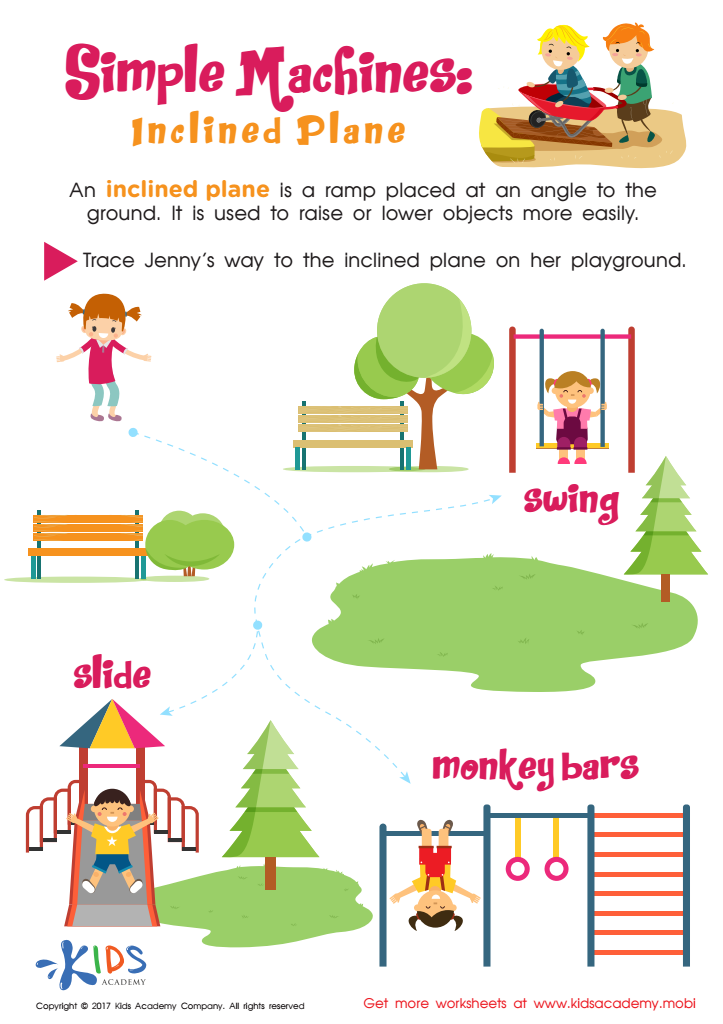Understanding Inclined Planes Worksheets for Kids
1 filtered results
-
From - To


Simple Machines Inclined Plane Worksheet
Question/Answer
How to train the Understanding Inclined Planes skill in Grade 2 students learning about Physical Science?
To train Grade 2 students on understanding inclined planes, introduce simple, hands-on activities. Start by letting them roll or slide objects down various slopes. Discuss how the slope's angle affects speed and ease of movement. Incorporate simple experiments, such as comparing how different materials (like cardboard and plastic) influence the speed of objects.
How to test a Grade 2 student’s Understanding Inclined Planes skills?
To test a Grade 2 student's understanding of inclined planes, present them with simple, hands-on activities like rolling or sliding objects down various ramps. Ask them to predict and observe changes when altering the slope's steepness or the object's weight. Incorporate questions to gauge their grasp of how inclination and weight affect speed and effort needed for movement.
What does the Understanding Inclined Planes skill mean when it comes to Grade 2 Physical Science learning?
The Understanding Inclined Planes skill in Grade 2 Physical Science learning involves teaching students about the basic concepts of inclined planes as simple machines. This includes recognizing them in various contexts, understanding how they make lifting or moving objects easier by reducing the effort needed, and identifying examples of inclined planes in their everyday environment.
 Assign to the classroom
Assign to the classroom

.jpg)










